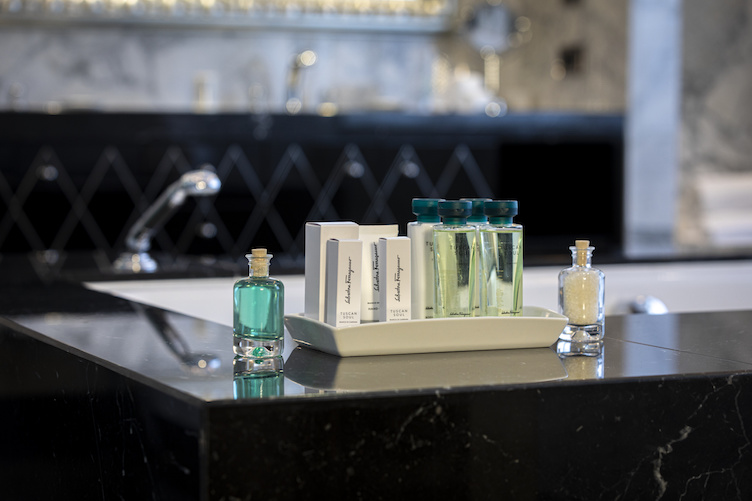Kempinski Hotels & Salvatore Ferragamo Announce High-End Hotel Collaboration

Photo Credit: Kempinski Hotels
Kempinski Hotels and Salvatore Ferragamo are about to make your travel experiences just that more luxurious. Today, the brands announced a strategic partnership to push their guest experience to a luxurious new level.

Photo Credit: Kempinski Hotels
Several projects will mark the collaboration: Ferragamo perfumes and home fragrances will be available on Kempinski e-commerce platforms, and Kempinski will offer to top clients access to dedicated events in nearby Ferragamo boutiques.
The two companies have also paid homage to the Lady in Red – the iconic Kempinski brand ambassador. The strikingly elegant refined, tailor-made red uniform of each Lady in Red has been endowed with exclusive Salvatore Ferragamo red Vara shoes, which will be offered as a present by the Italian brand.

Joining forces was a natural fit here, as both companies share some common DNA. Berthold Kempinski started his business creating fine-dining concepts, and Salvatore Ferragamo was destined to design shoes. After launching their individual businesses, both saw a quick increase in demand and reputation. Since 1897, Kempinski hoteliers have been creating exceptionally stunning, quietly luxurious properties with understated European elegance around the world, while Ferragamo have been dressing their clients “from toe to head” in European style since 1927.

Photo Credit: Kempinski Hotels
Besides their vision, passion and mission, the two companies also pursue a common environment-focused approach. Under their partnership, all Ferragamo hotel amenities, tailor-made and distributed across the whole Kempinski network, will be made in Italy out of 100% recycled plastic. For their part, Kempinski has partnered with Clean The World, an organization that collects and recycles soap bars and bottled amenities discarded by the hospitality industry, to distribute them – together with other donated hygiene products – to disadvantaged communities worldwide, thus significantly increasing the prevention of hygiene-related diseases and deaths.













